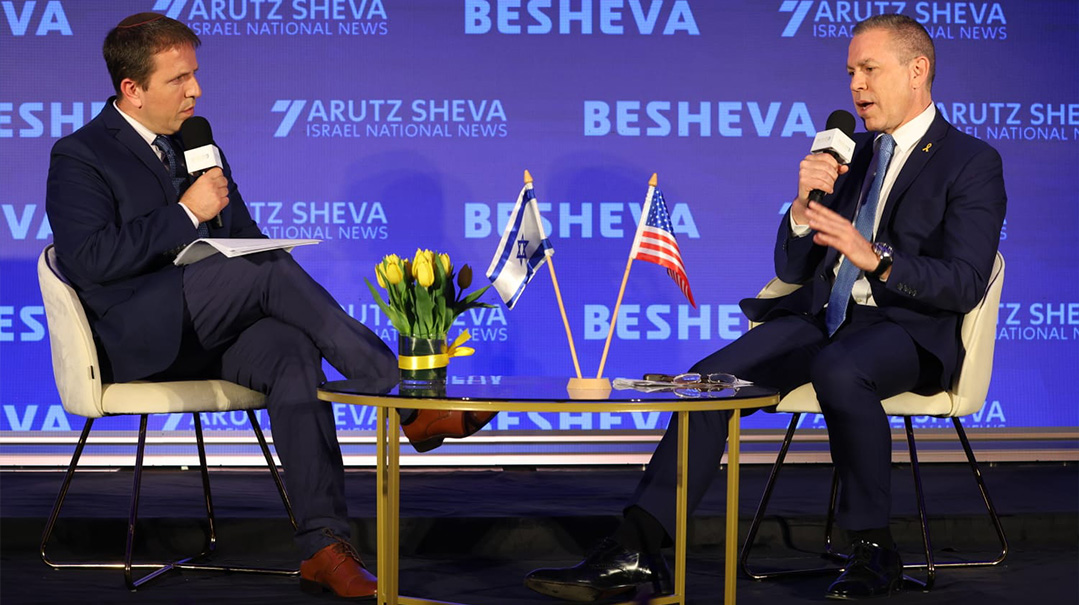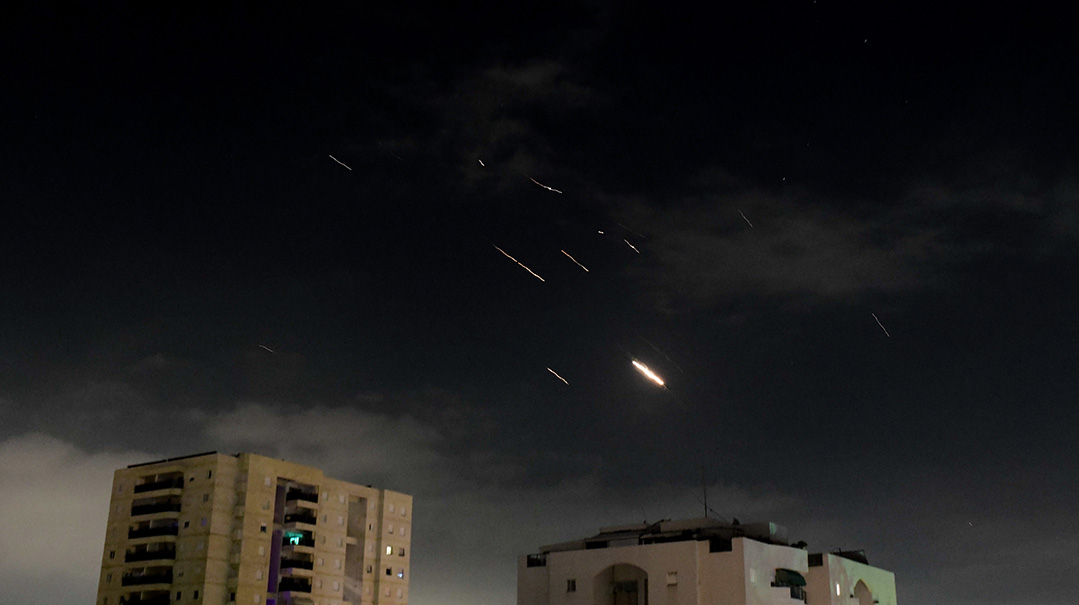A Tale of Two Cities

These ancient remnants next to the Mediterranean tell another tale, of two parallel Jewish worlds focused on two cities
1
Stand on the ruins of the Roman hippodrome on the Caesarea beachfront, and you can almost hear the roar of the crowd. Here, two millennia ago, 13,000 spectators watched chariot races, having docked in Herod the Great’s remarkably-engineered adjacent harbor. A stone’s throw from the sports arena lay the administrative headquarters that was the nerve center of the Roman presence in ancient Judea. There are traditions that somewhere in this complex, Rabi Akiva was imprisoned and executed for teaching Torah in defiance of Hadrian’s decrees.
Two millennia later, the magnificent relics are a reminder of what made Herod the land of Israel’s most successful builder until the Azrieli family with their malls and Tel Aviv skyscrapers.
These ancient remnants next to the Mediterranean tell another tale, of two parallel Jewish worlds focused on two cities.
Seventy years after the Churban, Yerushalayim was still the spiritual focal point of the Jewish people. But alongside the Torah-true Jews of Jerusalem, a deeply Romanized Jewish population was centered on Caesarea.
Eager to partake of all that the dominant culture had to offer, these Jews joined their imperial overlords in the sports that were a mainstay of Roman public life.
In Chazal’s formulation, the two cities represented different power centers in a cosmic struggle for the Jewish soul, only one of which could attain primacy at any given moment.
“Keisari and Yerushalayim,” says the gemara in Megillah. “If this one is complete, the other is destroyed.”
Fast forward two millennia, and as Israel is torn over the fate of the country’s justice system, not much has changed.
It’s obvious to all that the question at hand isn’t how judges are selected, but what type of country the modern State of Israel is. It’s a Kulturkampf about Jewish identity versus secularism — a battle that has intensified in recent years, as the left wing turns progressive and the right wing becomes increasingly comfortable with faith.
Today’s clash is also a tale of two cities: between conservative Yerushalayim and what Israelis call “Medinat Tel Aviv” — the techy, self-consciously global, secular bubble on the country’s coast.
As Israeli politics heads into what promises to be a summer of heated clashes over the legal system, the sculptures of charioteers on the Caesarea shoreline are a reminder that much of history is cyclical. Today’s struggle between two competing Jewish visions is as old as these ruins.
2
SOhow to move forward in the political standoff? For a master class in what not to do, Bibi need look no further than the previous government’s mishandling of the tax hikes on soda and disposable plastics. Seen by the Finance Ministry as a way of raising revenue while fighting obesity and environmental damage, within days of their announcement, the laws had been branded an attack on the religious and chareidi sectors.
The fact that the sugar tax included diet soda and grape juice needed for Kiddush was likely just bad policymaking by gormless bureaucrats, but it played into a suspicion that the ministry under Avigdor Lieberman was out to get religious people.
Ditto for the plastics levy, which would disproportionately affect large families. Lieberman’s laconic response — “let them buy a dishwasher” — had an unhelpful whiff of Marie Antoinette about it.
By the time the Bennett-Lapid government fell, the crisis around cutlery and Coke had become totemic, ranking in importance somewhere alongside the Iran file.
All of which meant that the new government was faced with no choice but to repeal the taxes — depriving policymakers of the only proven tool for reducing high sugar consumption.
(Note to the chareidi community: most secular people aren’t out to get us, and this was likely no exception. The first casualties of the politicization of the soda tax are chareidim themselves, in the form of health problems that the taxes sought to prevent.)
As Bibi seeks to find a way forward over the legal crisis, that saga is a cautionary note about the perils of short-term policymaking. Even if his coalition holds, if the government rams through reforms that aren’t backed by the bulk of Middle Israel, Netanyahu faces the possibility that the changes will be reversed in short order by the next left-of-center government to take power.
3
Adding to Bibi’s headaches is the brewing crisis over the chareidi draft law. The High Court’s repeated interventions to strike down previous attempts to legislate an exemption from service, were a central cause of the political instability of the last few years, and resulted in chareidi support for the moves to roll back the Court’s power.
But the political difficulty in passing the exemption — unpopular with many of the chareidim’s right wing partners — puts the lie to the euphoric idea of a fundamental reordering of Israeli politics that has arisen over the last few years.
The narrative of a new convergence of the chareidi and nationalist parties gained prominence in the wake of Aryeh Deri’s crucial role in holding together the Bibi bloc in exile. It gained currency as Bezalel Smotrich fought for the rights of lomdei Torah, who are an increasingly-prominent part of the chardal wing of the National-Religious world.
But the draft issue shows the limits of chareidi integration into the nationalist-traditional bloc to which chareidi politicians have hitched their wagon.
Because if there’s one thing that unites most right-wing voters with their left-wing counterparts, it’s their contempt for what they perceive as chareidi draft-dodging.
When the issue is on the table, the right-wing coalition strains at the seams.
All of which leads to one inescapable conclusion: that chareidi politicians need to relearn a sense of modesty when it comes to the IDF and national security.
During the protracted coalition negotiations over Bibi’s sixth coalition, there was talk of Aryeh Deri taking the Defense Ministry and of Agudah leader Yitzchok Goldknopf gaining a coveted place on the Knesset’s Foreign Affairs and Defense subcommittee.
Both ideas were wrongheaded. So long as chareidim — protected by their politicians — don’t serve in the IDF, the optics of those same politicians taking senior roles in the country’s security forums are dreadful.
Let’s not kid ourselves: the warm words towardstradition that are now frequently heard on the right don’t mean that a million Likud voters have absorbed the Nefesh HaChaim’s words on the centrality of Torah study.
In that tale of two cities, the tug-of-war between Yerushalayim and Caesarea, parts of secular Israel may be inching towards tradition, but no more than that.
Road Lessons
For most of humanity, cars are a way to get from A to B; for this columnist, they’re a bountiful source of copy.
And so it proved recently in London when the car I was driving refused to turn on. A graduate of the gouty-car academy with many a boost from Israel’s Yedidim roadside assistance organization, I quickly found out that the local branch of Chaverim performs the same function.
Within minutes Yaakov Spencer, a volunteer car-whisperer, was examining the obstreperous vehicle. Crocodile clips bit into battery and soon I was back on the road.
It was an absolutely mundane encounter, and at the same time a bit extraordinary.
Because while anyone who lives in a mid-sized frum community is used to being able to whistle up a volunteer tire changer, paramedic, or emergency locksmith at a moment’s notice, there’s absolutely nothing normal about it.
Try showing outsiders to our community the gemach pages in a local phone book, and you’ll be met by disbelief. The idea that so many people actively seek to lend their money, skills, and possessions (shoutout to the proverbial arbes gemach) is something very hard for others to comprehend.
While volunteering and charitable giving are common elsewhere, the level and sheer range of volunteerism is unique to frum communities. Our society seems to be hardwired to perform chesed.
The “Gemach Phenomenon,” as I think of it, is worth a proper treatment elsewhere, but here is one important takeaway.
As a community, we can be self-critical. “The system” is apparently failing in chinuch, seminary costs are said to be extortionate, our young couples are entitled, gaudy consumption is the new normal — it’s a familiar (and partly accurate) litany.
But judging by the extraordinary chesed that marks frum communities, something must be going right.
Every so often, we’re allowed to look beyond the occasional inconveniences and inconsistencies of frum life at the good that’s all around us.
(Originally featured in Mishpacha, Issue 958)
Oops! We could not locate your form.







